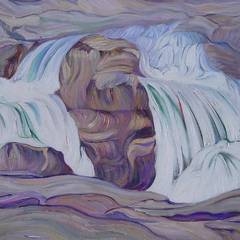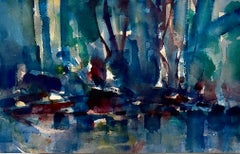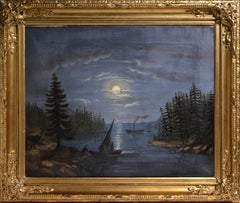Grace Hill Turnbull Art
Grace Hill Turnbull was born in 1880 in Baltimore, Maryland. As times and the climate of the art world changed, her work in painting varied from traditional portraits to modernist figures in landscapes. In 1914 in Paris, France, she was awarded the Whitelaw Reid First Prize. She exhibited in the annual exhibitions of the National Association of Women Painters and Sculptors in New York City, including their 45th and 50th shows in 1936 and 1942. Her first experience as a sculptress was at age 13 when she and her brother Bayard built a miniature white marble church at the family's summer home. She was considered very avant-garde when she started painting around the beginning of the 20th-century, first portraits and then landscapes and flowers. In 1928, she moved into her house in Guilford, designed by her brother Bayard, and concentrated on creating sculptural work. Turnbull worked as a sculptor into advanced age and she also authored several books. She died in Baltimore in 1976.
21st Century and Contemporary Grace Hill Turnbull Art
Oil
1920s American Modern Grace Hill Turnbull Art
Canvas, Oil
20th Century American Modern Grace Hill Turnbull Art
Canvas, Oil
Late 19th Century Realist Grace Hill Turnbull Art
Canvas, Wood, Cotton Canvas, Oil
Early 20th Century Realist Grace Hill Turnbull Art
Wood, Oil, Cardboard
1930s American Modern Grace Hill Turnbull Art
Oil
2010s American Modern Grace Hill Turnbull Art
Oil, Panel
1870s Realist Grace Hill Turnbull Art
Oil
Early 20th Century American Modern Grace Hill Turnbull Art
Oil
1950s American Modern Grace Hill Turnbull Art
Canvas, Oil
Mid-18th Century Realist Grace Hill Turnbull Art
Oil, Wood Panel, Wood
Mid-20th Century American Modern Grace Hill Turnbull Art
Canvas, Ink, Oil
Early 20th Century Pointillist Grace Hill Turnbull Art
Canvas, Oil, Board
Mid-20th Century American Modern Grace Hill Turnbull Art
Oil, Panel



